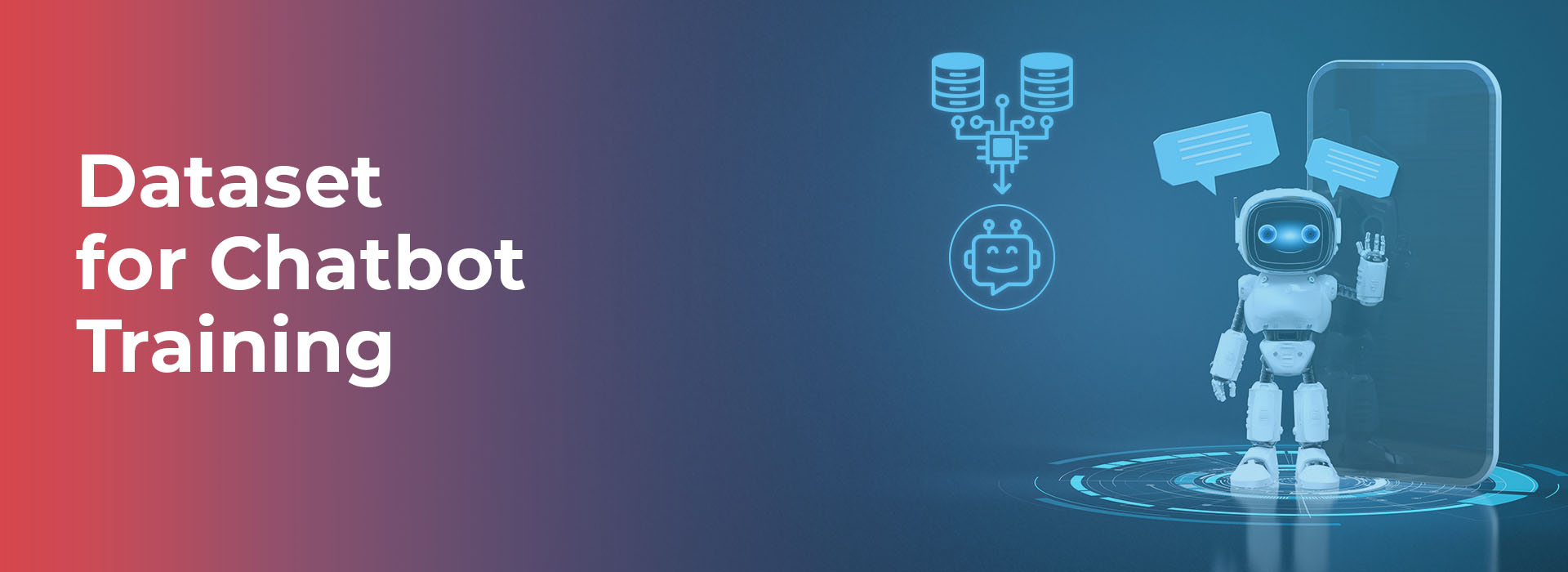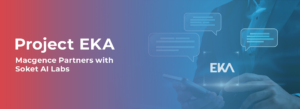- The Importance of Dataset for Chatbot Training
- The Part of the Dataset for the Training of the Chatbot in Focus
- Types of Chatbot Training Datasets
- Sourcing Quality Datasets
- Preprocessing and Annotation
- Best Practices For Creating Or Building Elements Working Datasets
- Successful Examples of Chatbot Training Datasets
- Leverage on the Potential of Chatbot Training Datasets
Everything You Need to Know About Dataset for Chatbot Training
Chatbots are making things easy as well as changing the perception in which humans look at technology. Everyone uses chatbots – be it a customer service, or be it a virtual assistant for Siri or Alexa. But there’s one commonality across all these AI based systems – training datasets. For any bot to function properly, there is a need for dataset for chatbot training as they make all the difference in terms of performance, accuracy, and versatility.
This blog looks into the datasets specifically in relation to chatbots. If you are an AI fan, a developer, or a tech startup that wants to create its own chatbot solution, learn how to source, shape and utilize the best datasets to develop high quality chatbots.
The Importance of Dataset for Chatbot Training
Chatbots are already assisting people in various industries. Be it sales, customer service, user interaction, or even answering questions, they act as a mediator. In order for the bot to respond and communicate effectively with customers through the chat, clear and precise data representatives must pre-prepare artificial intelligence algorithms.
Dataset for chatbot training can learn only if there is appropriate understanding of the training sets, such as accurate information gathering and identifying customers’ needs and wants. In simpler terms, higher the quality of the training set, better the output of the bot which ultimately leads to better results without disappointing target customers.
The Part of the Dataset for the Training of the Chatbot in Focus
Training datasets serve the purpose of getting a bot to compose a message and providing it with a particular stance. The efficacy of data has great impacts on the understanding of language, sentiment analysis and the flow of a conversation.
Accuracy and Precision: User inputs are accurately responded to by the chatbots because the data sets are well-trained.
Language Diversity: The multilingual data sets make it possible for a chatbot to foster conversations in other languages.
Context Understanding: With diverse and well-categorized data sets, the chatbot can discern varied inputs and respond accordingly.
Strong and well-rounded data sets are more than valuable, they are essential for organizations focused on developing competitive conversational AI technologies.
Types of Chatbot Training Datasets
For different purposes, various datasets are employed throughout the chatbot’s training procedure. The main types of datasets and their functions in the handling of a chatbot are discussed here briefly below.
1. Question-Answer Datasets
These datasets have a list of questions and answers to accompany them that have been prepared beforehand. The data is however suitable for customer service since the bots trained on the data perform well in scenarios similar to questions and answers.
2. Intent Datasets
Intent datasets indicate the user intent behind the question asked (e.g. buy a ticket, get some recommendations). This helps pinpoint what exactly a user needs which in turn makes the response more relevant.
3. Entity Recognition Datasets
These datasets attach one or more words to target entities like time, places and names of items. In such cases, chatbots are able to use such information to grab relevant information and frame the conversation dynamically.
4. Conversational Datasets
These datasets are intended for dialogue systems and, thus, they include several examples of multi-turn dialogues. They assist chatbots in keeping the exchanges both natural and relevant to the content.
5. Sentiment Datasets
The offering of the primary sentiment datasets is to help classify emotions within the sentences to positive, negative or neutral classification which enables the chatbots to detect user sentiment and affect the chatbots’ responses dynamically.
Sourcing Quality Datasets
It can indeed be a challenge finding quality datasets, however there are many opportunities that are available. Here’s a breakdown of where to start.
1. Open Source Platforms
Kaggle, GitHub, and Dataverse’ are some of the examples of open source platforms available for the development of chatbots. For such people this is a great opportunity especially for starters or those with smaller budget projects.
2. Commercial Vendors
Macgence and other similar companies are engaged in the business of provision of ready datasets that have been designed with specific industries and specific applications in mind. Of course these kinds of datasets come at a price, however, they are more abundant types and higher quality.
3. Data Collection Strategies
At times it is most effective to build up custom datasets, strategies such as user surveys, websites’ data collecting, existing customers’ data can be great sources of quality training data.
Preprocessing and Annotation
The struggle of obtaining the data ends in the acquisition phase. It is also critical to note compilation and evaluation due to its importance of ensuring quality datasets will be usable and waste free.
1. Preprocessing Steps
Data Cleaning: the goal is identifying and eliminating the non useful content or the redundant information in the dataset in order to make it lean and effective.
Normalization: The process of homogenizing the text entries by standardizing the capitalization and punctuation.
2. Annotation
So, labeling data has its advantages since it allows influential things such as intents, entities and parts of speech to be easier to interpret by the chatbot. For instance, if a chatbot is supposed to interpret the word “tomorrow” and it is tagged against a date entity, the chatbot is forced to use its Processor’s context.
In companies that need some specific solutions, Macgence experts assist in annotating and normalizing datasets.
Best Practices For Creating Or Building Elements Working Datasets
Building a dataset from scratch is a challenging task however it can be easily simplified and made effective as long as certain best practices are known and adhered to.
Focus on Accuracy
One of the most important things is making sure there are no mistakes on the dataset entries. Even a small error is capable of causing chaos in the training of the speech or language model for the chatbot.
Diversify Your Dataset
Incorporate different language use cases, various accents and different user responses and intentions. This helps enhance the effectiveness of the chatbot to interact with a wider scope of users.
Make It Scalable
Bear in mind that your chatbot will have a lifecycle and will change. So consider designing a structure of a dataset that is easy to change, update and expand.
Test and Iterate
Add a small dataset, check how your chatbot reacts to it and focus the next iterations around the analysis of wins and losses.
Successful Examples of Chatbot Training Datasets
Multiple business firms or developers are already deploying chatbots having been equipped with a novel dataset approach.
1. OpenAI’s GPT Models
The intellectual abilities of modern transformers from OpenAI are because they have been accurately trained on vast amounts of data. In these datasets, books, websites and other content created by users are found.
2. E commerce Chatbots
Top E-commerce companies where Amazon is founded on intent and entity based datasets to hasten purchasing activities.
Chatbots, by their nature, utilize natural language processing technology and respond to orders in real time by stating the location of the order.
3. Health Chatbots
Organizations in the health sector utilize pre designed questions answers datasets to drive bots that are able to give health information and perform symptom triage which is the critical first impression of the patient.
Such information demonstrates how useful and important well-defined databases are in a number of sectors.
Leverage on the Potential of Chatbot Training Datasets
If a good chatbot is to be created, then it requires the right datasets that are appropriate for the problem at hand. Having a good dataset should not be seen as just an additional IT requirement, but rather the most important aspect that will take value to the users.
Want your chatbot to truly be unique? Macgence develops professional solutions, including finished datasets crafted by practitioners, for you. We will definitely help you achieve your goals whether you are a newly started technical company ready for new developments or a developer who is ready to start another task.
So, don’t wait any further. Create an account with Macgence today, and let your chatbot receive the best training it needs.
FAQs
Ans: – To answer questions correctly and accurately, chatbots have to be able to understand the language and the intent of the user and the relevant context, and datasets help to teach them that.
Ans: – You can obtain datasets for chatbots through open source sources such as Kaggle or Github, through organizations such as Macgence, or through collecting them yourself.
Ans: – Macgence offers industry and use-case focused annotated datasets in high-quality to guarantee performance and scalability for your chatbot system in a great manner.
You Might Like
February 28, 2025
Project EKA – Driving the Future of AI in India
Spread the loveArtificial Intelligence (AI) has long been heralded as the driving force behind global technological revolutions. But what happens when AI isn’t tailored to the needs of its diverse users? Project EKA is answering that question in India. This groundbreaking initiative aims to redefine the AI landscape, bridging the gap between India’s cultural, linguistic, […]
March 7, 2025
What is Data Annotation? And How Can It Help Build Better AI?
Spread the loveIntroduction In the world of digitalised artificial intelligence (AI) and machine learning (ML), data is the core base of innovation. However, raw data alone is not sufficient to train accurate AI models. That’s why data annotation comes forward to resolve this. It is a fundamental process that helps machines to understand and interpret […]
March 6, 2025
Vertical AI Agents: Redefining Business Efficiency and Innovation
Spread the loveThe pace of industry activity is being altered by the evolution of AI technology. Its most recent advancement represents yet another level in Vertical AI systems. This is a cross discipline form of AI strategy that aims to improve automation in decision making and task optimization by heuristically solving all encompassing problems within […]
March 5, 2025
Use of Insurance Data Annotation Services for AI/ML Models
Spread the loveThe integration of artificial intelligence (AI) and machine learning (ML) is rapidly transforming the insurance industry. In order to build reliable AI/ML models, however, thorough data annotation is necessary. Insurance data annotation is a key step in enabling automated systems to read complex insurance documents, identify fraud, and optimize claim processing. If you […]


 Previous Blog
Previous Blog







